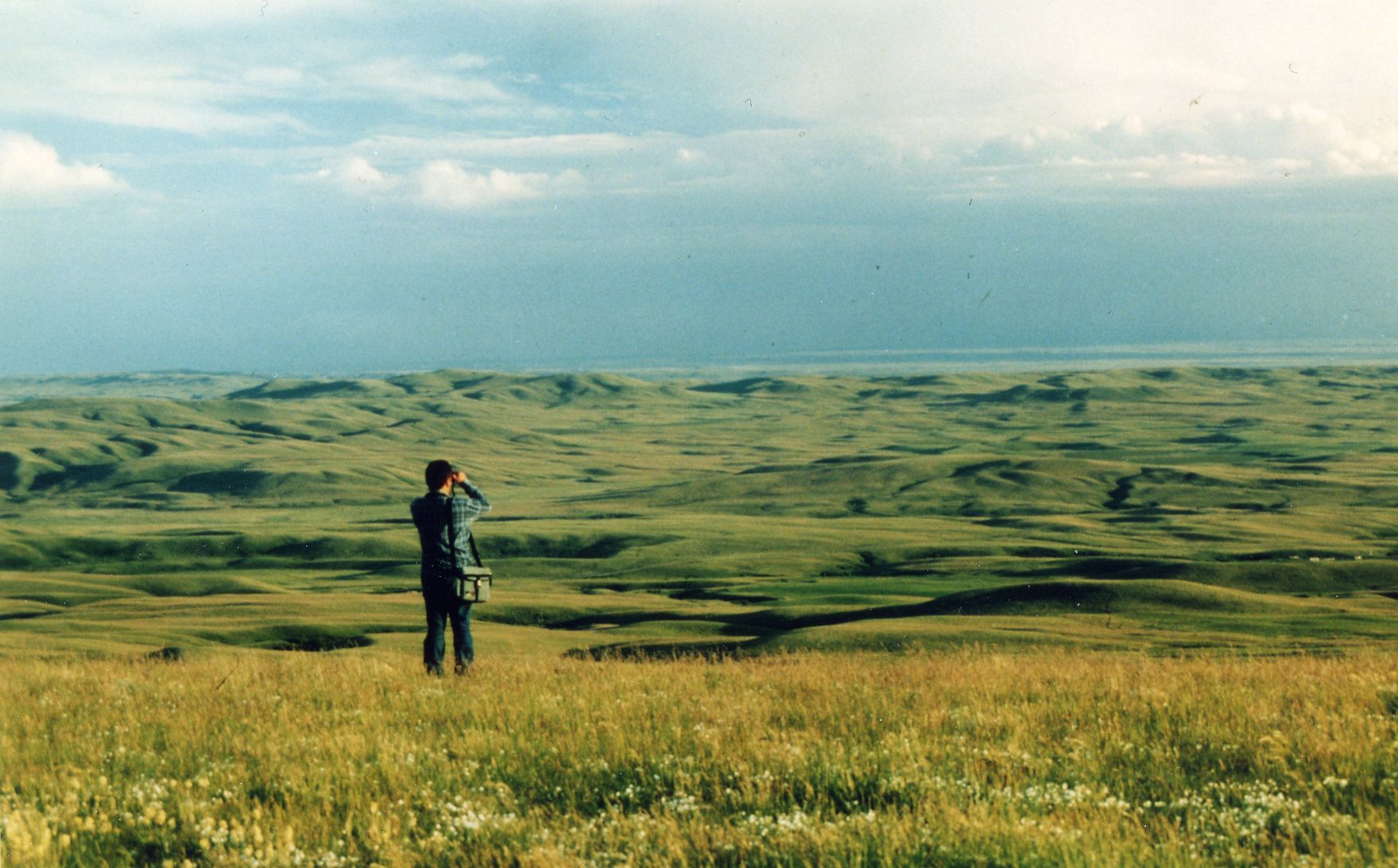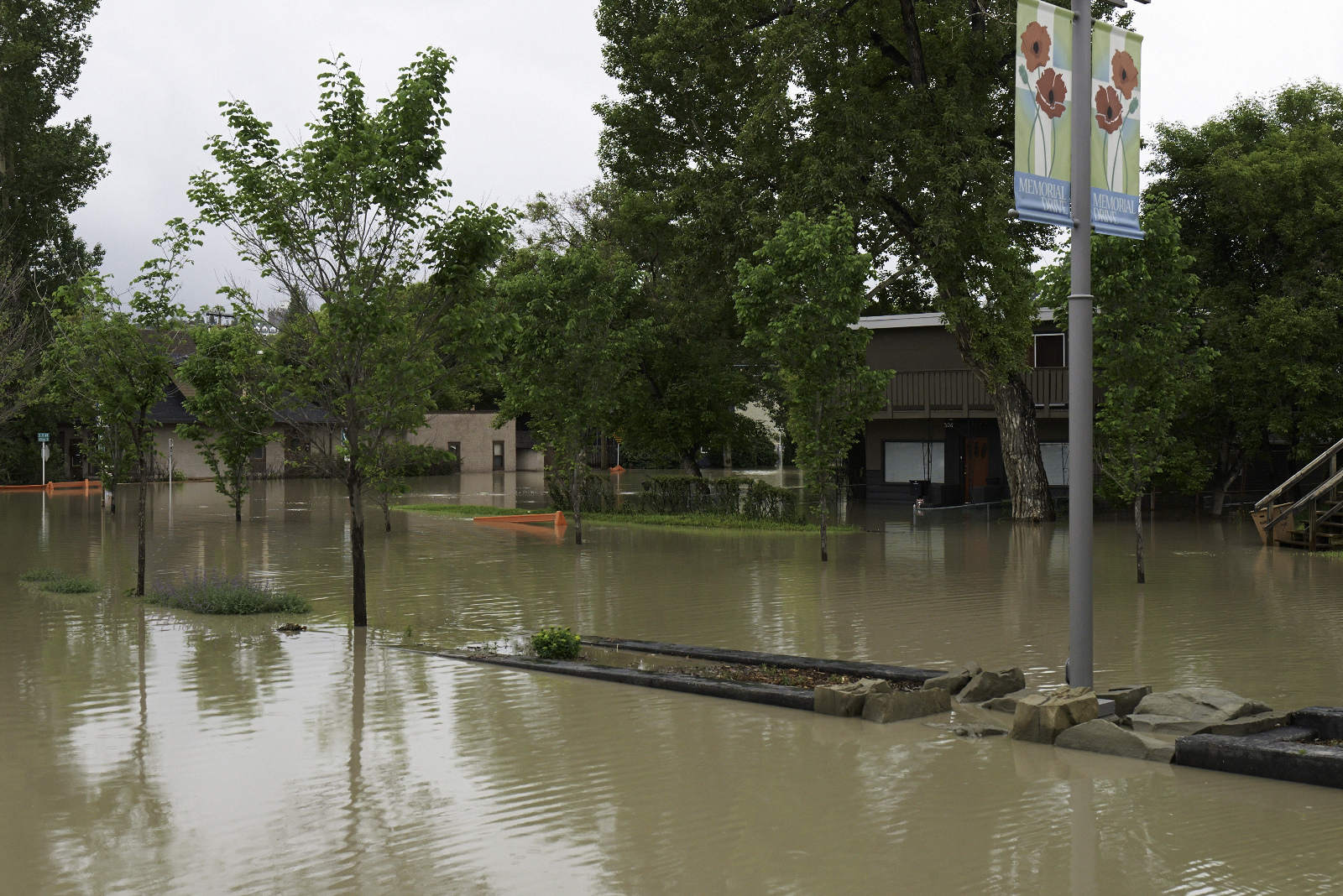
Milk River area, Alberta’s southern grasslands provide habitat for almost 75% of Alberta’s species at risk.
What is Climate Change?
Climate change describes how our planet’s climate and weather systems are changing due to the ever-increasing amount of carbon dioxide (CO2) and other greenhouse gases (GHGs) in our atmosphere. The changes are considered anthropogenic — meaning human-caused — since the emissions responsible are produced primarily through human activities.
The average global temperature has increased by over 1°C since about 1880. The United Nations Intergovernmental Panel on Climate Change (IPCC) says we need to stop the world from warming by a full 2°C to avoid the most harmful impacts of climate change. Ideally, we need to stay under 1.5°C warmer by the year 2100.
However, as it stands, the world is on track to surpass +2.5°C of warming, and emissions are set to increase by more than 10 percent by 2030, according to the latest data from the United Nations.
What does a warmer planet mean?
It has become more difficult for ecosystems to function as Earth’s climate changes because these natural systems have adapted to exist under specific conditions over millennia.
Our ecosystems are not equipped to adapt at the speed at which human activities are changing our planet. Evolution by natural selection does not happen fast enough for many species to ensure their survival in a climate-changed world. We rely on healthy natural ecosystems to meet our needs, such as clean air, drinking water, and the food that we grow. We will have trouble meeting our own basic needs for survival if these ecosystems struggle to adapt.
In short, ecosystems support human life. So, if they struggle, we humans will struggle too.
Why action is needed now

A photo of residents fleeing the 2016 Fort McMurray Wildfire – the most expensive natural disaster in Canadian history.
Climate change is already happening in Canada and around the world. It is increasing the frequency and severity of natural disasters – like floods, forest fires, and drought — which pose an increased risk to both human and non-human lives. These disasters also carry a large economic cost to cover prevention, mitigation, and emergency recovery.
Feedback loops accelerate the impacts. Addressing climate change is now an issue of harm reduction, as some climate change is already guaranteed from existing emissions. We have the responsibility to act now to minimize the impact on future generations and those most at-risk — such as Indigenous and/or racialized communities, women, the unhoused, and other marginalized groups, especially those in the global south.

Flooded Kensington homes in Calgary in June 2013.
The combustion of fossil fuels such as coal, oil, and natural gas drives climate change. Emissions are produced through their extraction and production, known as upstream emissions, and when they are burned by the end consumer, known as downstream emissions (e.g., tailpipe emissions from gas-powered cars and trucks).
The Government of Alberta has a historical and ongoing dependence on the fossil fuel industry. That means the province contributes more than its fair share toward worsening the climate crisis.
Canada is one of the largest polluters of GHG emissions in the world (both per capita and total emissions), so we have a great responsibility as a country to do our part in reducing emissions to prevent climate disasters. The Government of Canada signed onto the Paris Agreement in 2015 — a legally-binding international treaty — committing Canada to 40 to 45 percent GHG reductions by 2030, and net zero by 2050.
The oil and gas industry is Canada’s largest source of GHG emissions, based on 2020 data gathered and shared by Environment and Climate Change Canada (ECCC), representing anywhere from 27 to 37 percent of our total reported emissions by sector. According to ECCC: “Canada’s oil sands production nearly tripled from 2005-2020, outweighing emissions intensity improvements, and leading to an increase in absolute emissions.”
We must be significantly more aggressive with our phase-out of the fossil fuel industry than we have been so far, recent findings show, if we are going to meet our agreed-upon climate targets.
Alberta’s tie to climate change
The consequences of climate change can be seen throughout the province.
Ecosystems that act as carbon sinks — such as old-growth forests, native prairies, and peat-dominant wetlands are crucial for the storage of existing carbon as well as for pulling additional carbon from our atmosphere. Some representatives of government and industry want to clear-cut old-growth forests because they are seen as an increased risk for forest fire, but that perspective runs counter to what the most up-to-date science suggests.
From 2010 to 2020, 1,400 metric tons of CO2 were emitted into the atmosphere through harvested wood in Canada.
Alberta’s watersheds face an increased risk of both flooding and drought due to climate change, and both extremes pose a risk to biodiversity as well as human health and our ability to meet our basic needs. These natural disasters also result in increased stress to aquatic and riparian (stream bank) ecosystems and the species that rely on them for their survival such as at-risk native trout (e.g., bull trout, Athabasca rainbow trout, and westslope cutthroat trout).
As rare weather events become more frequent and/or extreme, we will need to rely on forests and other riparian vegetation to mitigate the flow of water in our rivers and streams, and to maintain soil integrity along our streambanks to prevent damage to municipal infrastructure due to erosion caused by high-velocity stream flows.
Peatlands occupy only three percent of Earth’s terrestrial surface area but store a staggering 30 percent of all land-based carbon – more carbon than all other vegetation types in the world combined. Alberta’s oil sands region is dominated by peatlands and as these areas are destroyed for the creation (or expansion) of oil sands mines, it releases carbon and prevents us from capturing more in the future.
In Alberta, water licences are governed by the “first in time, first in right” principle, which means that in times of water scarcity, the licences issued furthest back in time have priority over newer licences. Irrigation Districts own many of the oldest and the largest volume water licences issued under the Water Act. This means that the Irrigation Districts have priority over the use of the water allocated under their licences, to the detriment of the public (i.e., drinking water) or environmental needs, even in times of severe drought.
Native grasslands are also important carbon stores. They are particularly stable because carbon is stored in the soil and the root systems within, which isn’t lost through fire. The cultivation, conversion, and disturbance of soil (through agriculture or other development) can release this stored carbon. Alberta’s native grasslands alone have been estimated to store three times the annual greenhouse gas emissions of Canada.
The transition to renewable energy is important for lowering Alberta’s carbon contribution to the global carbon footprint. However, this development needs to happen responsibly and equitably to not cause more damage by disturbing intact native ecosystems and to avoid repeating the harms committed by the fossil fuel industry towards Indigenous and local communities.
Climate change is a threat to biodiversity. Climate change is shrinking the southern range for several species, but the northern edge is not expanding at the same rate. Extreme temperatures and weather events, including drought and flooding, also threaten vulnerable or sensitive species. On the other hand, biodiversity has been shown to buffer against climate extremes, and protecting biodiversity can mitigate some of the consequences of climate change on ecosystems.
Municipal development has a role to play in combating climate change as well. Recently, AWA has been involved with raising awareness of a new suburb proposed for Calgary’s southeast along the Bow River – known as Ricardo Ranch. This community will likely impact the riparian and wetland ecosystems in the area, while increasing urban sprawl, which both have implications for emissions and climate change. Our cities need to rethink how we grow to minimize our footprint on ecosystems that help us fight climate change.


